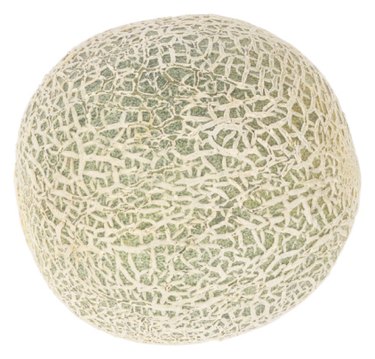
The American cantaloupe is actually not a true cantaloupe. True cantaloupes are native to Italy and are only grown in Europe. The American cantaloupe is a close relative, however, and it is an extremely healthy fruit. Cantaloupe is a low-calorie food and a good source of vitamins A and C. Like all fruits, cantaloupes can become contaminated with dangerous pathogens, so selecting a ripe, undamaged cantaloupe is important.
Step 1
Check the outside of the melon for bruises, soft spots, or tears. Bruises and soft spots indicate a melon that is overripe and may have gone bad. A cantaloupe with a damaged outer rind will spoil quickly.
Video of the Day
Step 2
Smell the end of the cantaloupe where the stem was attached. A good cantaloupe should have a fresh, sweet aroma.
Step 3
Make sure the cantaloupe is not shriveled, leaking juice, or damaged where the stem was attached. Pathogens that cause foodborne illnesses may enter through a damaged stem area.
Step 4
Inspect the area where the cantaloupe is being stored. Cantaloupes are extremely vulnerable to the absorption of aromas and liquids. Cantaloupes should be stored in clean, dry areas, away from raw meats and chemicals.
Step 5
Tap the cantaloupe with the palm of your hand. A ripe cantaloupe should make a hollow sound.
Tip
Store a firm cantaloupe at room temperature for several days for softer and juicer flesh.
Warning
When in doubt, throw it out. The dangers of eating a contaminated cantaloupe far outweigh the rewards.
Video of the Day